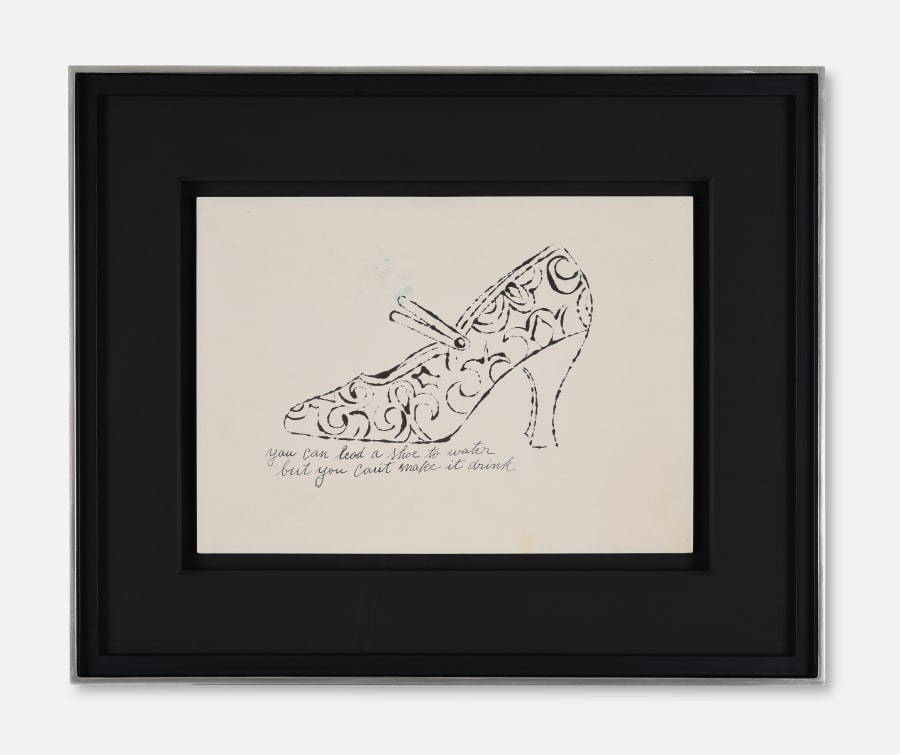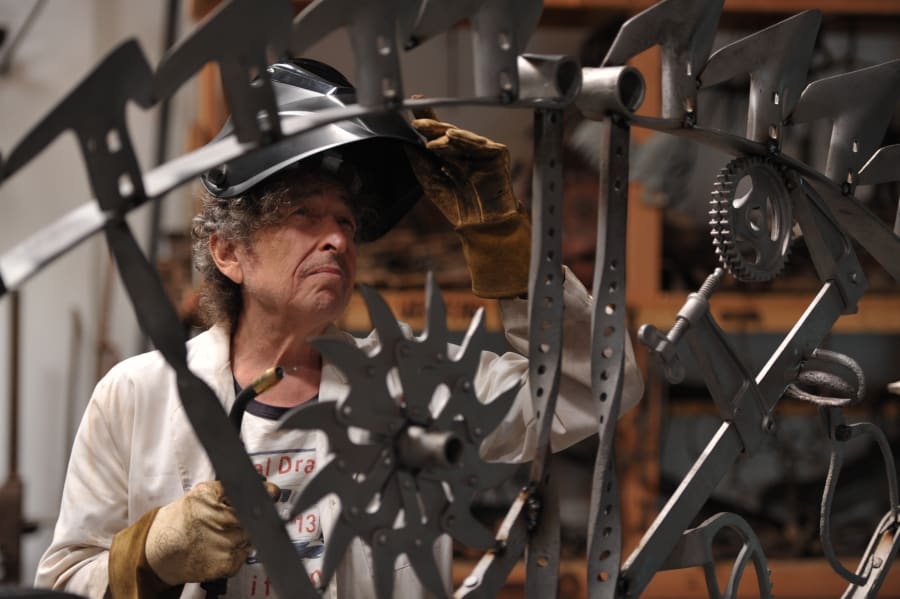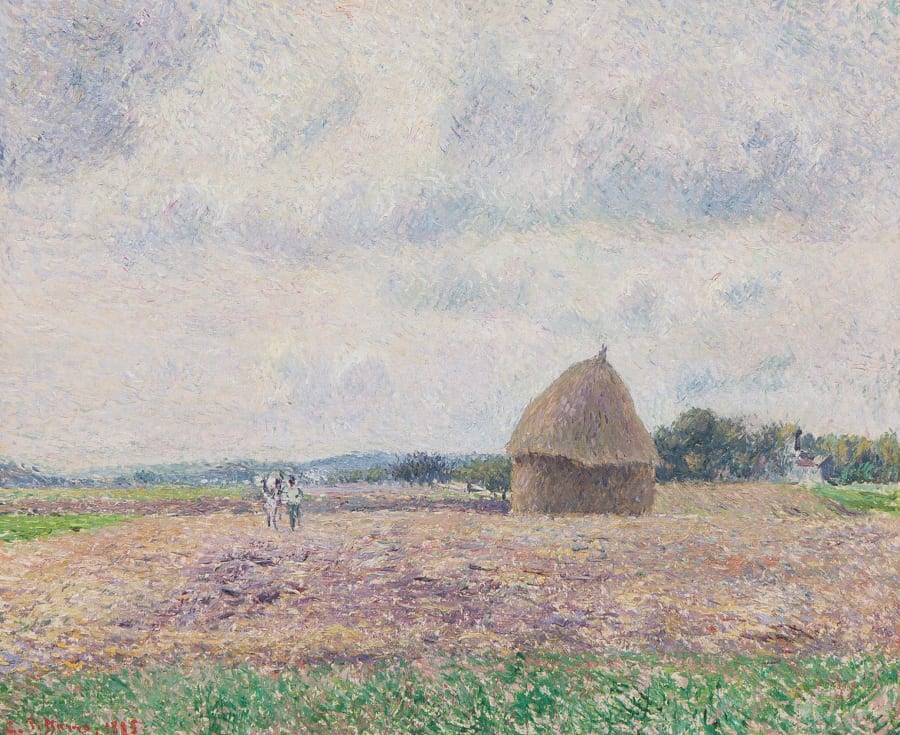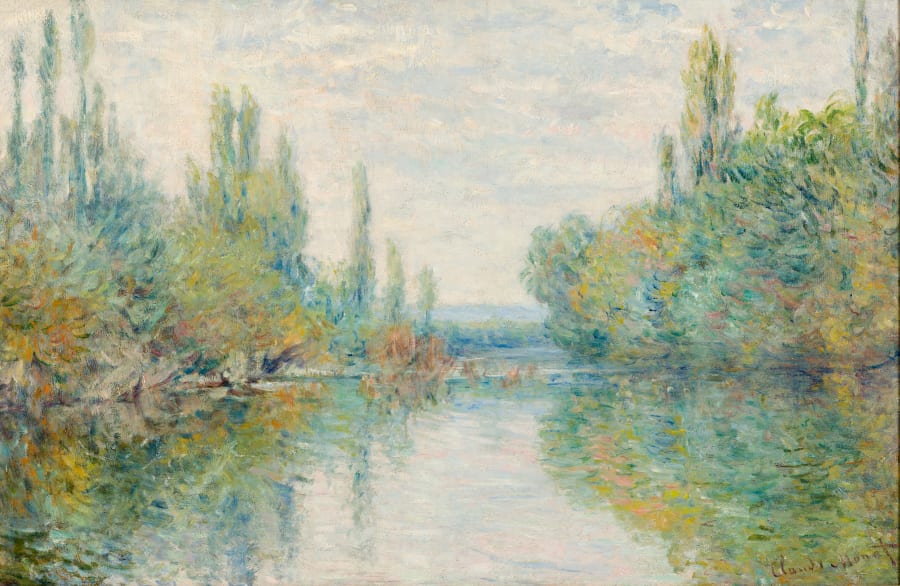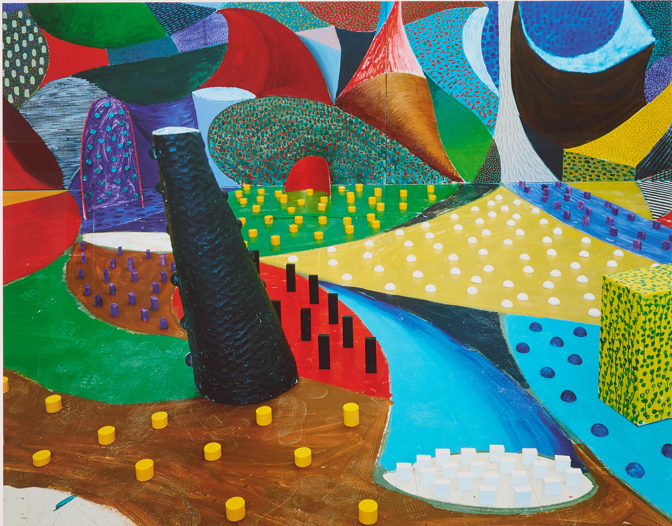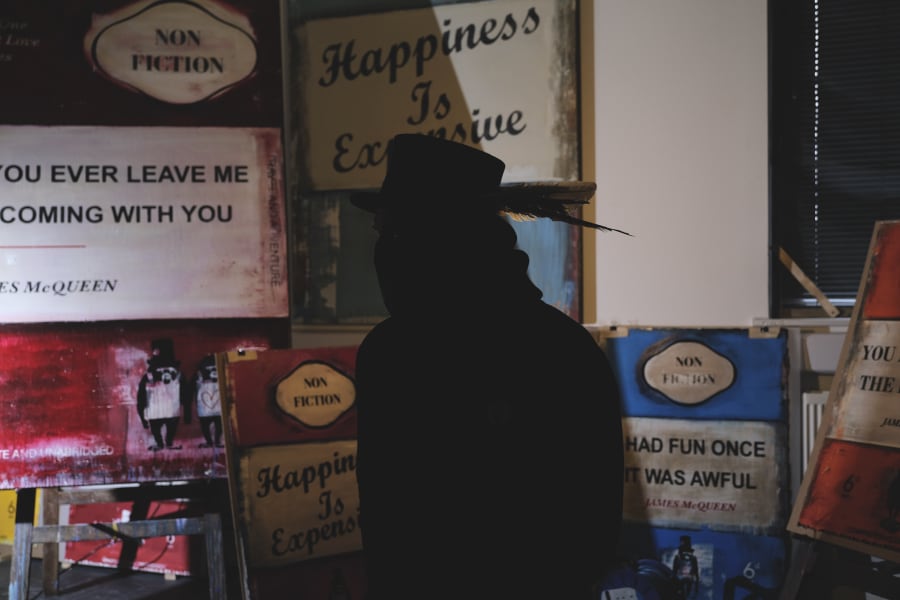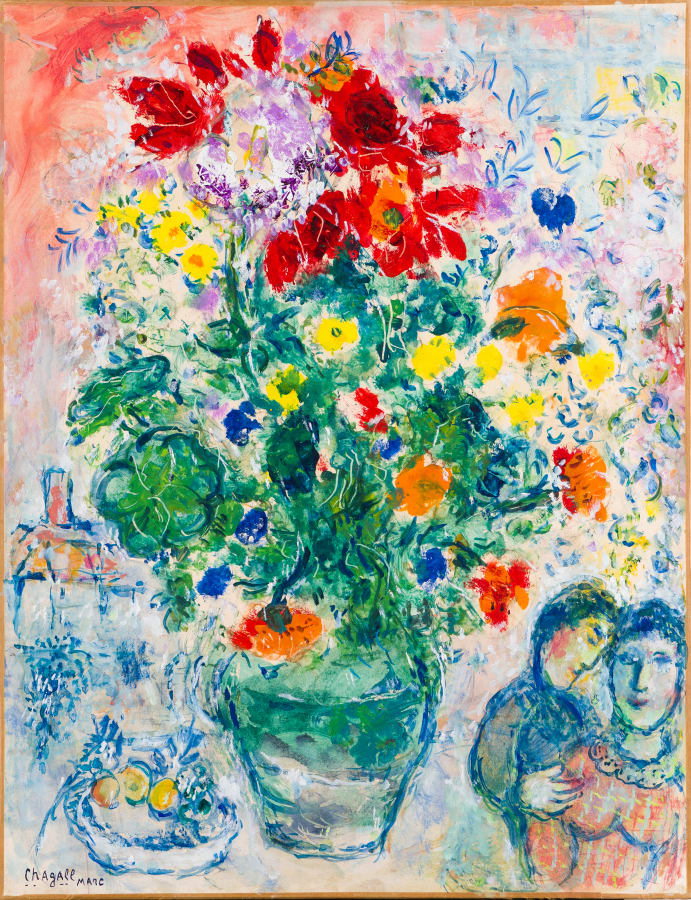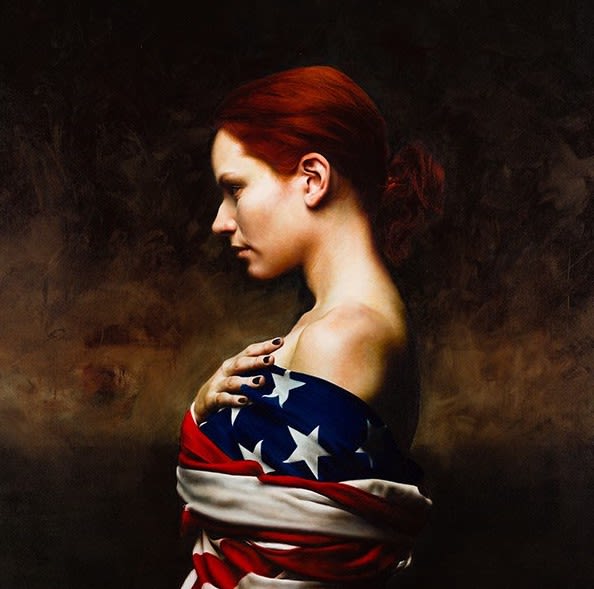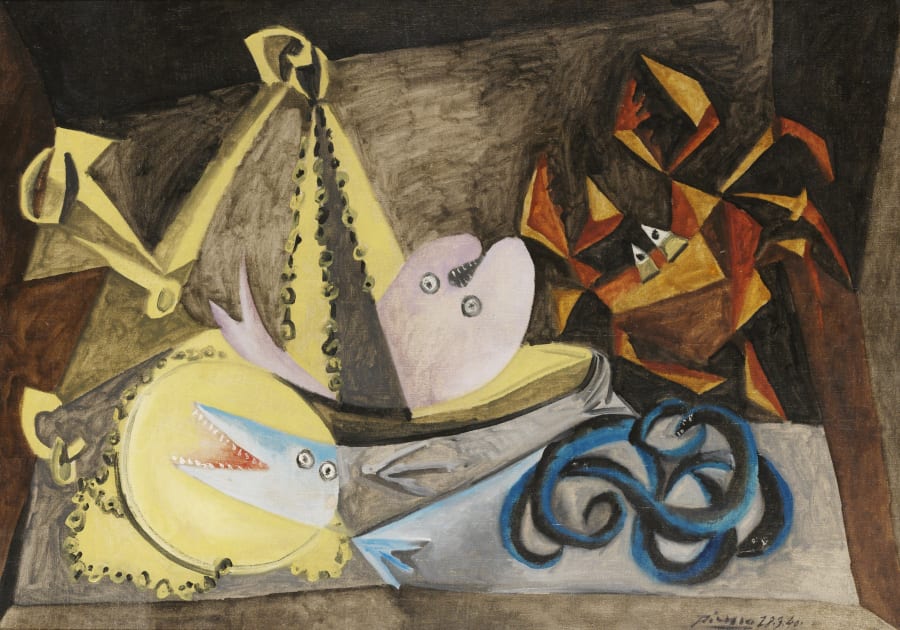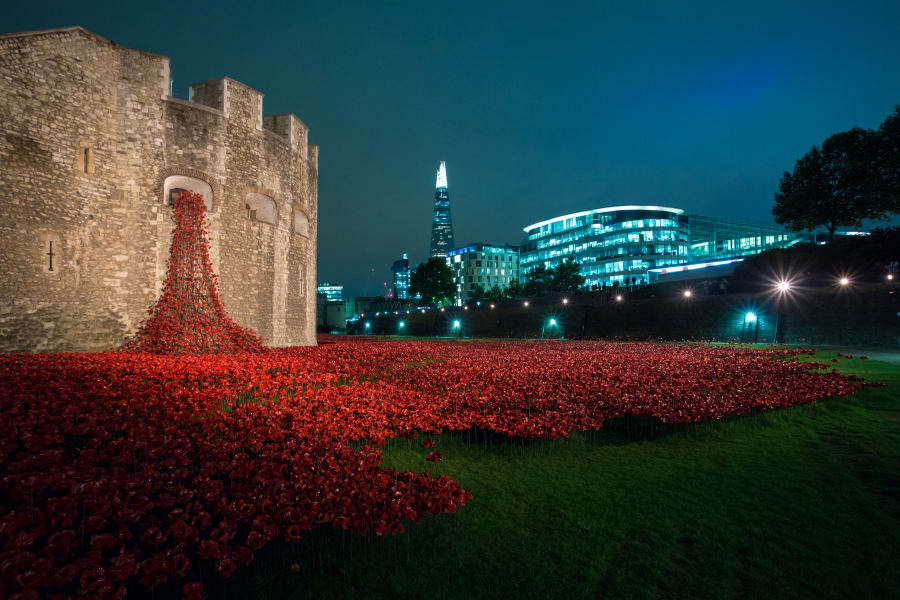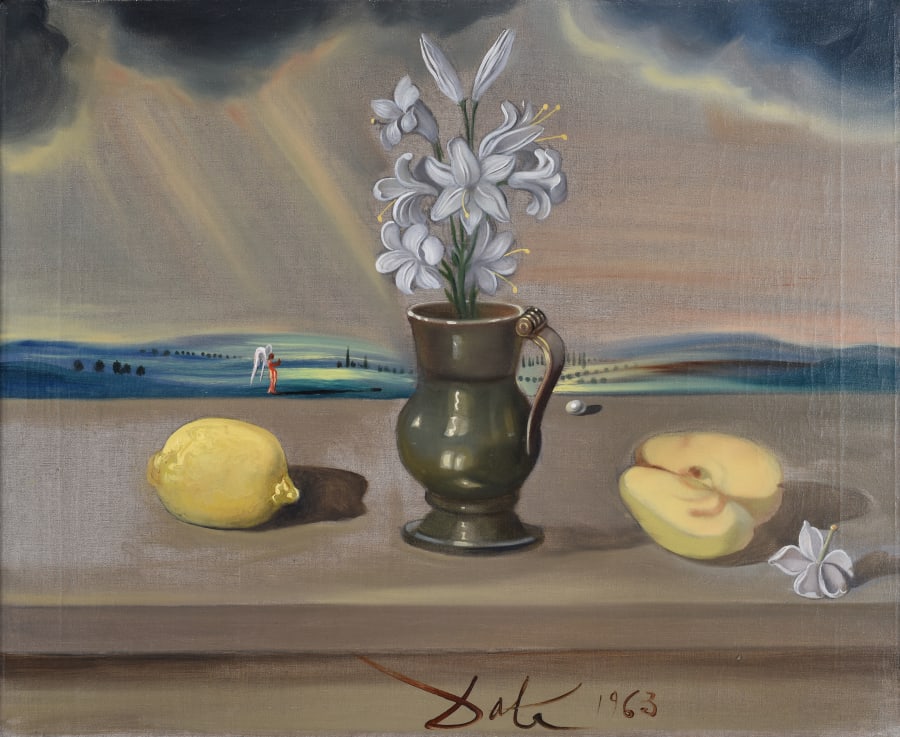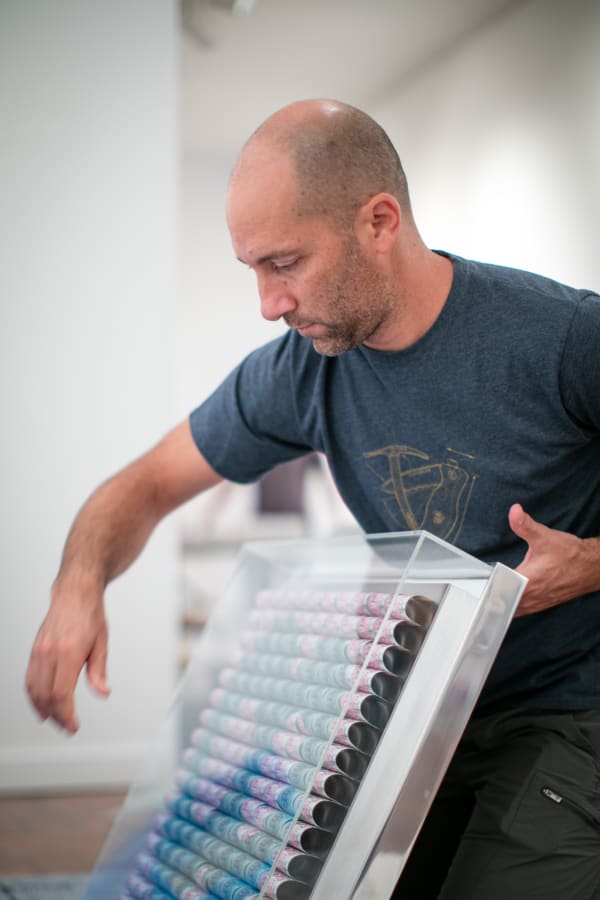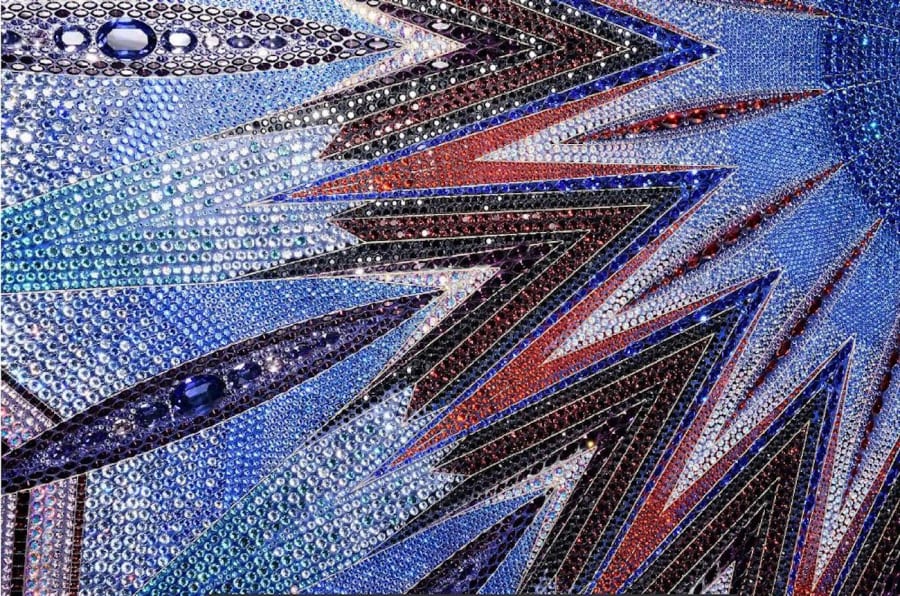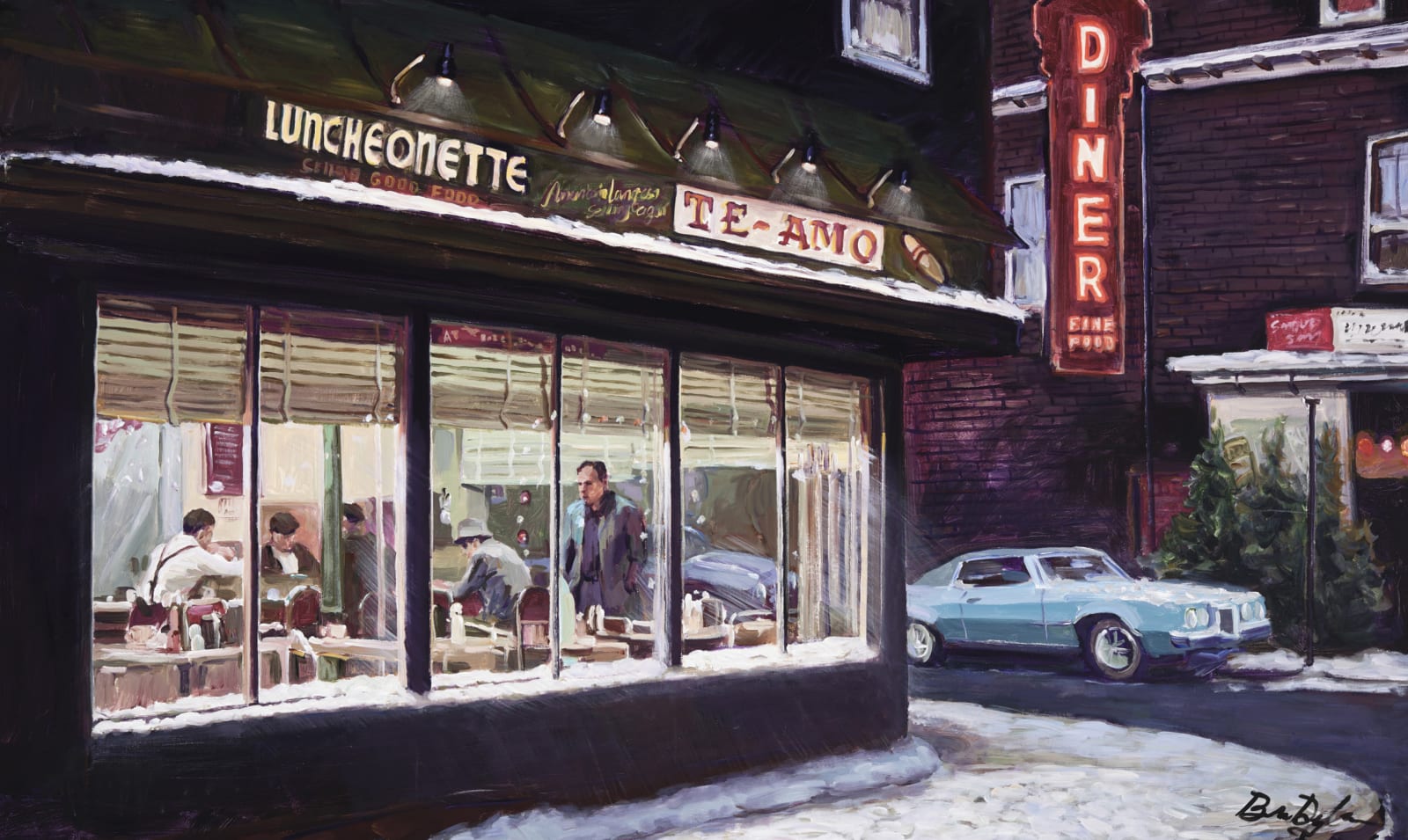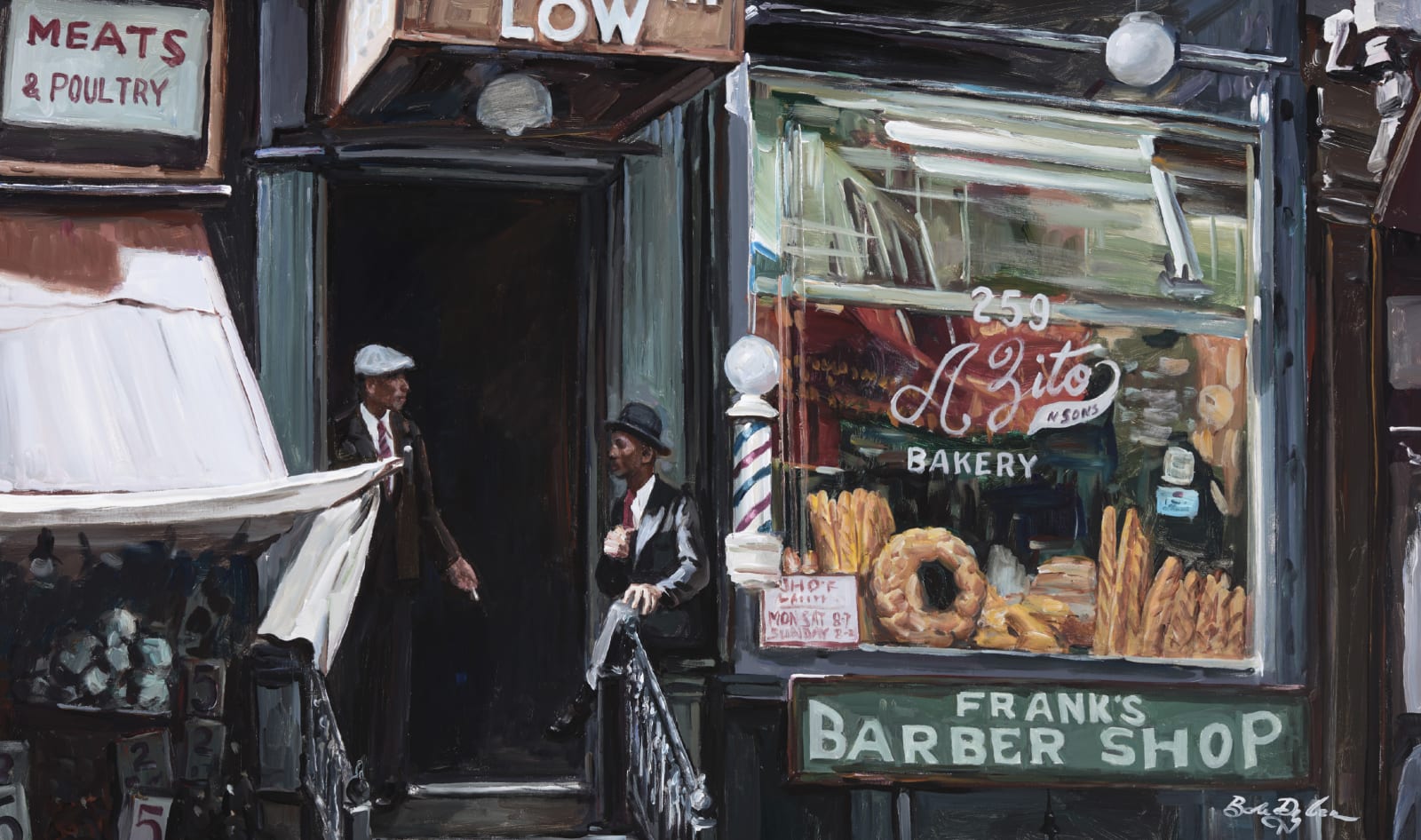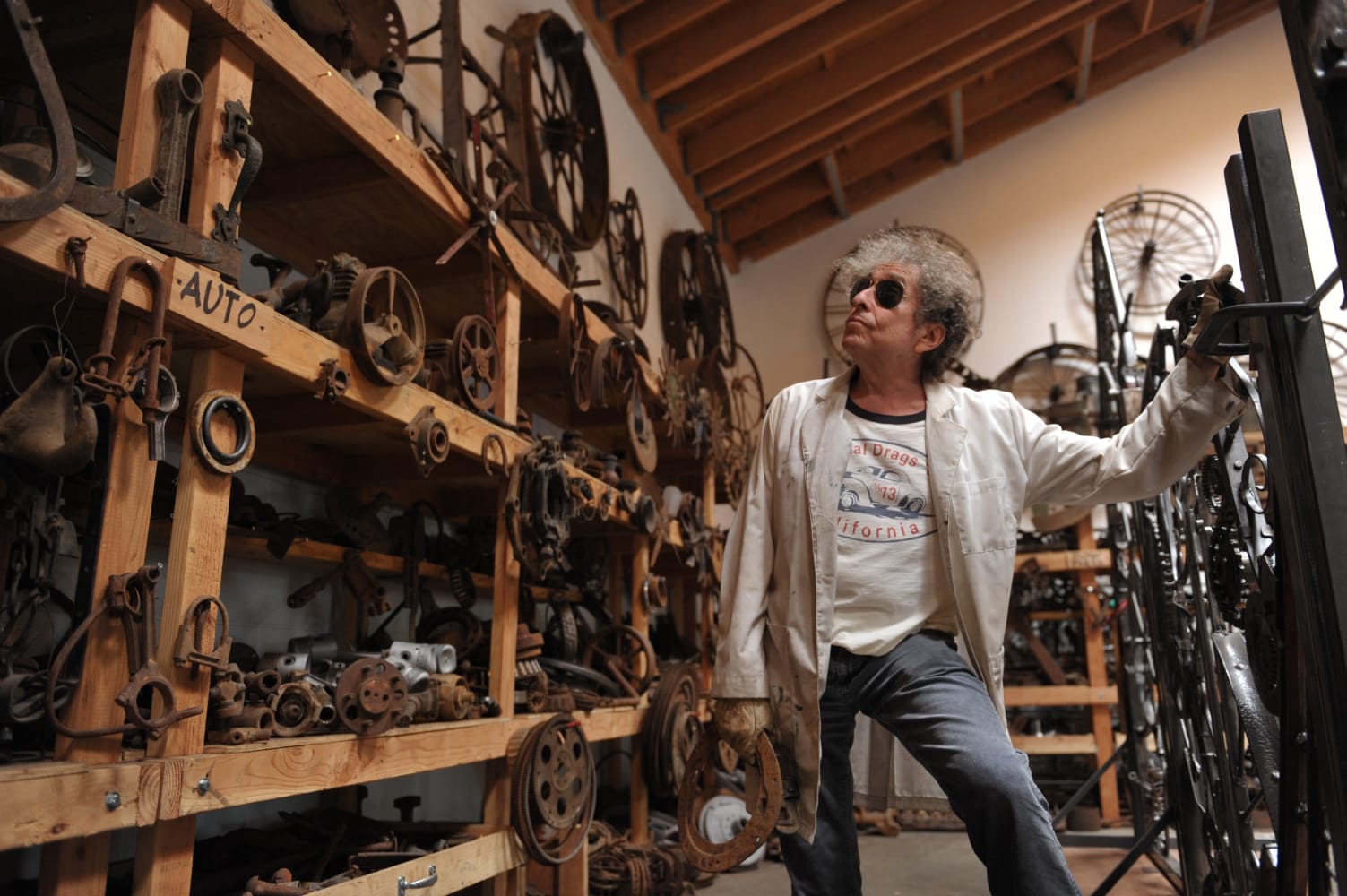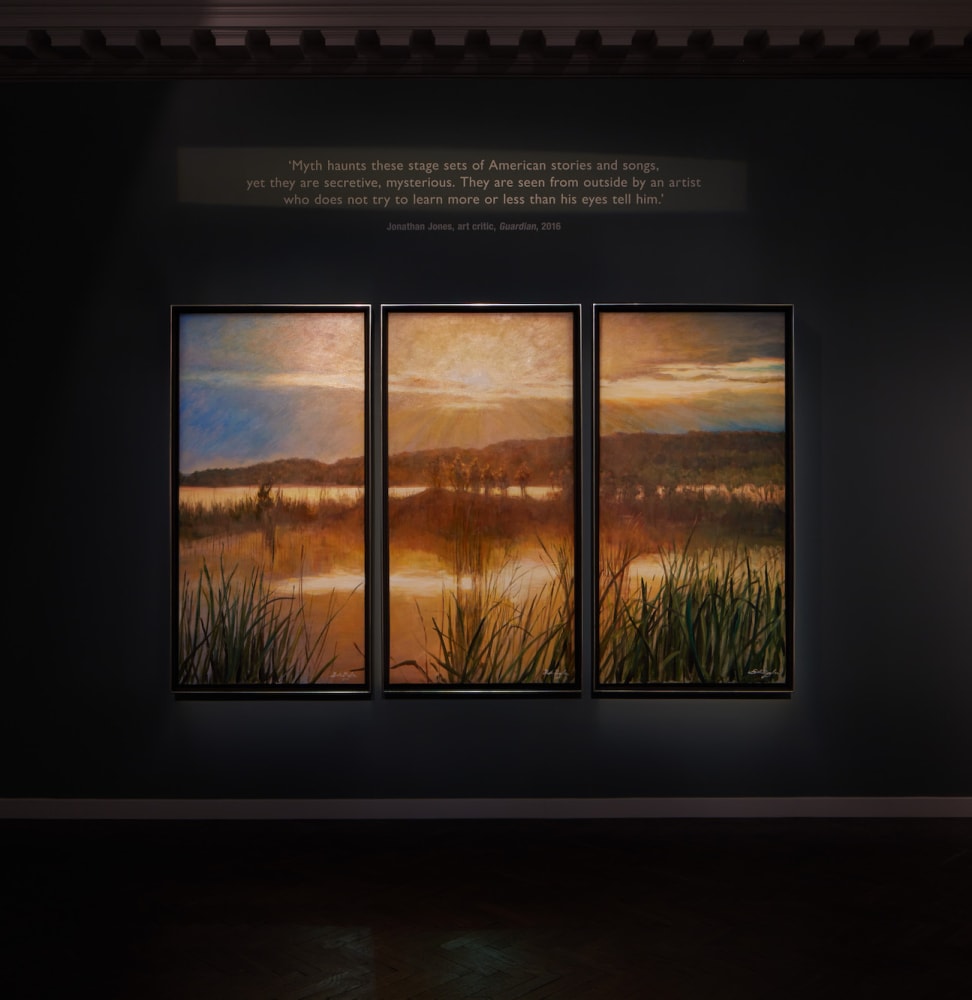Claude Monet
French, 1840-1926
Monet was the originator of the Impressionist style and leader of the group of Impressionist artists in France in the 1870s and 1880s.
Born in Paris on 14 November 1840, Claude-Oscar Monet was the son of a grocer. When he was five the family moved to Le Havre, on the Normandy coast. There he began to make pencil sketches of ships and produce caricature portraits which he exhibited in the framing shop where the painter Eugène Boudin worked. Boudin persuaded the young Monet to paint in the open air with him, observing nature directly. This plein-air technique of transferring perception to painted canvas, rather than remembering a scene and reproducing it in a studio, would become central to Impressionism.
After a period of training at the Académie Suisse in Paris, where he made the acquaintance of Camille Pissarro and Paul Cézanne, Monet served in the military in Algeria during 1860 and 1861. The next year he entered the studio of Charles Gleyre, where he met Frédéric Bazille, Alfred Sisley and Pierre-Auguste Renoir. From the mid-1860s Monet began to explore the effects of light, painting impressions of what passes briefly before the eye. The first true Impressionist paintings date from around 1869, when Monet and Renoir worked together at La Grenouillère, a resort at Bougival on the River Seine. Rapidly painted, the canvases are covered in small strokes of colour that suggest light reflecting off lapping water.
In 1870, Monet married his model Camille Doncieux; they would have two sons. He lived in London during the Franco-Prussian War and while there was introduced to Paul Durand-Ruel, a celebrated art dealer who later did much to popularise Impressionist works. On his return to France Monet moved to Argenteuil, on the Seine near Paris, and invited other artists to join him there. In an atmosphere of increasing hostility on the part of official artistic circles, he and Pissarro formed the alternative Anonymous Society of Artists, Painters, Sculptors and Engravers. A group of Impressionist artists hosted their own independent Salon in Paris from 15 April to 15 May 1874. Thirty artists took part, and Durand-Ruel recorded that many criticised the artwork, treating the artists like 'buffoons' and 'eccentrics'. However, a number of independent critics, such as Armand Silvestre and Philippe Burty, admired the way the artists created shadows and reflections while keeping their subjects fresh.
It was at this first exhibition that the term 'Impressionists' was coined. Louis Leroy, a writer for the satirical paper Le Charivari, wrote sardonically of Monet's Impression: Sunrise (1873): 'Impression, I knew it! I also said to myself, since I'm impressed, there must be some impression in that. And what freedom, what technical ease! Wallpaper in its embryonic state is more finished than this seascape.'
The following years saw Impressionism flourish. Monet began to create series of paintings examining the same scene under different lighting conditions. The first depicted the station of Saint-Lazare in Paris. However, his canvases found few buyers. Desperately poor, he constantly looked for places where life was cheaper, moving to Vétheuil in 1878, Poissy in 1882, and Giverny from 1883 until his death. At Vétheuil, Alice Hoschedé came with six of her children to join the family and look after Camille, who died of tuberculosis in 1879. Monet married Alice in 1892.
By the early 1880s, the Impressionists were no longer such a tightly-knit group, and their eighth exhibition, in 1886, proved to be their last. But Monet continued to explore nature, travelling widely in France, the Netherlands and Italy. In the late 1880s, his painting began to attract the attention of both the public and critics. Fame brought comfort and wealth. In 1890, Monet bought a property at Giverny, and that decade saw him working on several series, including haystacks (1890-1892), poplar trees on the River Epte (1890-1892) and the exterior of Rouen Cathedral (1892-1894). Again, he painted each scene under different weather conditions to explore the impressions they created and record them spontaneously in vivid colour.
At the beginning of the twentieth century, Monet travelled to find new subjects to paint, creating a set of views of the River Thames, including bridges and the Houses of Parliament, and a series based on the canals and palaces of Venice. But his most extensive - and famous - series is a study over almost 30 years of the waterlilies in the garden he designed at Giverny. Still pursuing the plein-air ideal, setting up easels all around the pond, he painted the scene from all angles. From 1916 until 1921 he produced a series of 14 large canvases which, hung in sequence, completely surround the viewer. He bequeathed them to the state, and in 1927 they were placed in two oval rooms of the Musée de l'Orangerie in the Tuileries Gardens.
After the death of his second wife in 1911, Monet was cared for by his daughter-in-law Blanche, herself widowed in 1914. He died of lung cancer on 5 December 1926 in Giverny. In 1966 Monet's home and garden were left to the Académie des Beaux Arts in Michel Monet's will; restored from 1977 to 1980, they are now maintained by the Fondation Claude Monet and open to the public.
